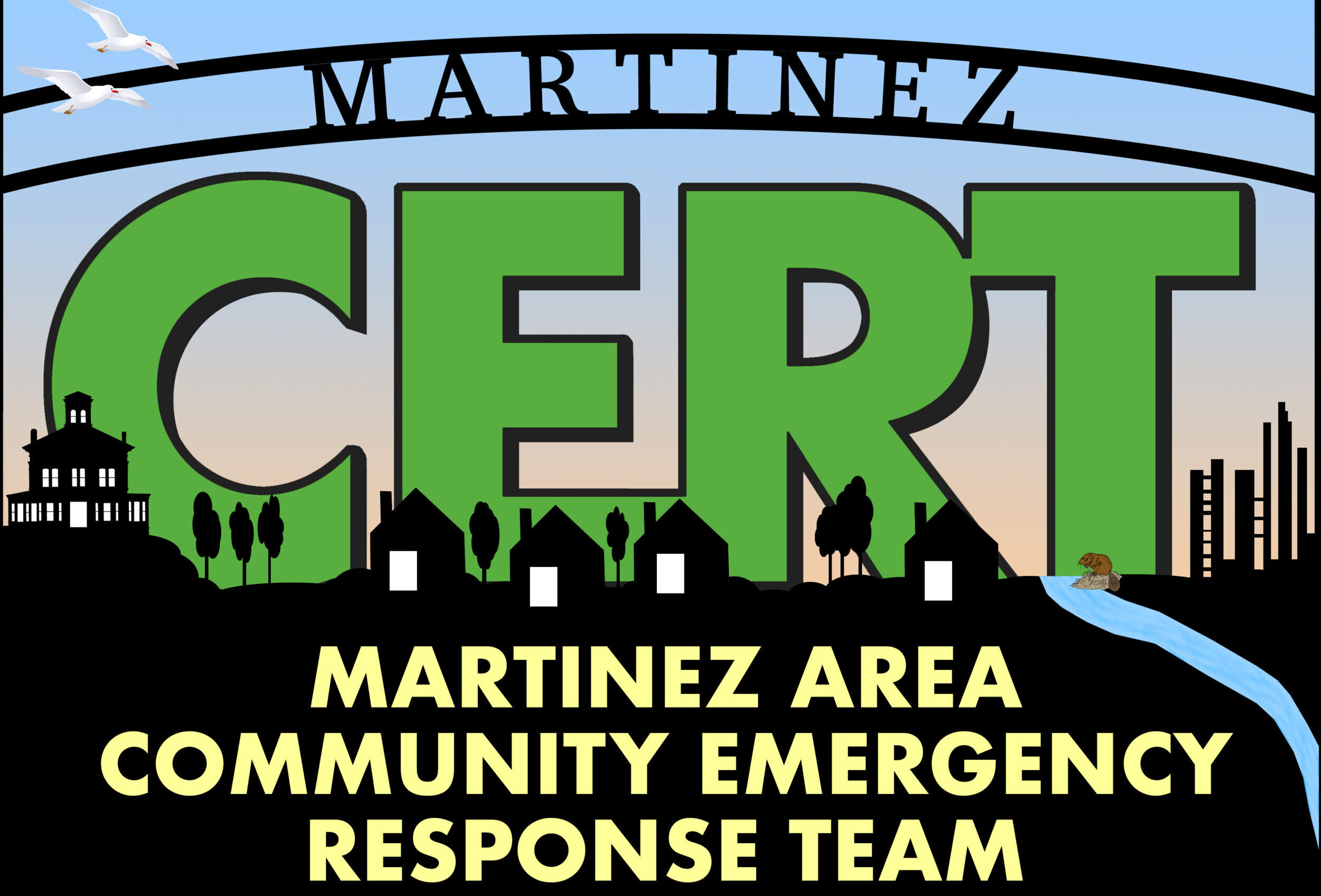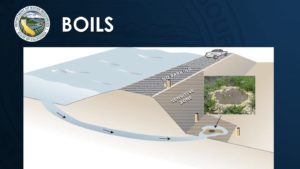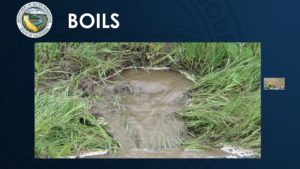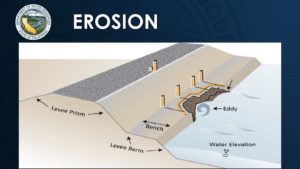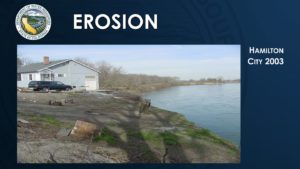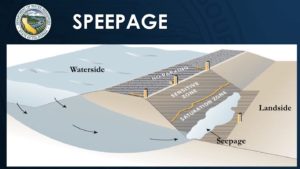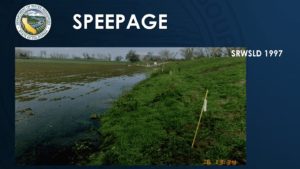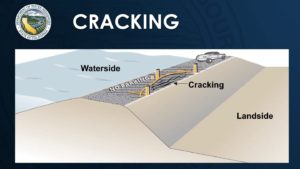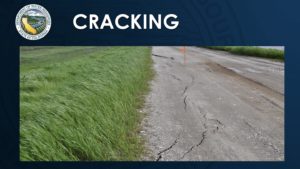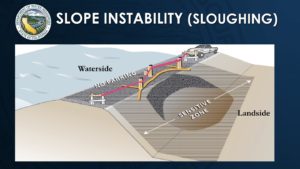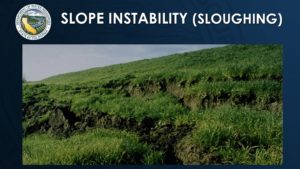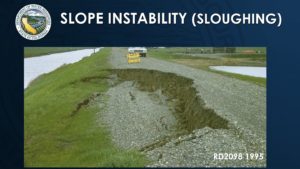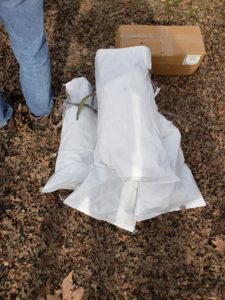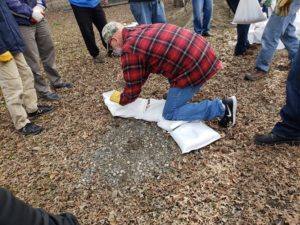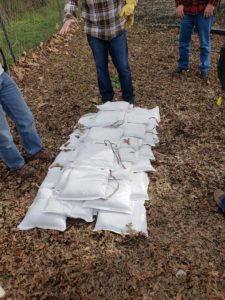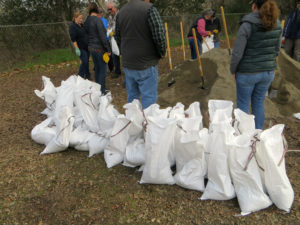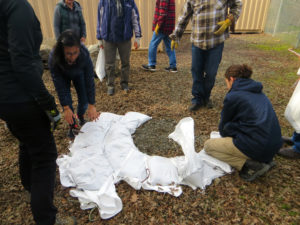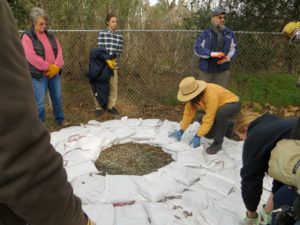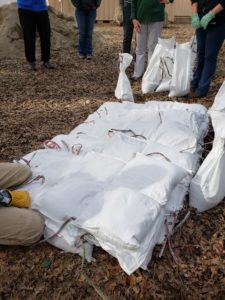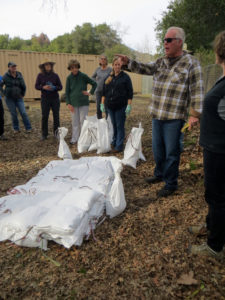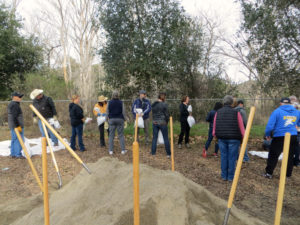Fighting Floods

The California Department of Water Resources and the Alameda County Fire Department hosted a fascinating seminar on Flood Fight Methods this past weekend. We learned that there are 5,000 miles of levees in the state. Richard, our speaker from DWR, had a team that worked with 1500 miles of them. Both Richard and David, our hands-on sandbagging guide, have been involved with several notable floods since the 1980s. Their experience made it a colorful and informative time. Richard noted that they approach floods like CPR: good to know and important information, but something you don’t want to use.
Richard noted that in his experience, the CA rainy season used to be longer but has shortened and intensified lately. This year we’re at 115% of normal. That’s good; we hope it keeps up at this pace.
As part of the morning presentation we watched an 18 minute video that gave us a good overview of their work, and how we would assemble a sandbag wall or protection if needed.
Next we got an overview of what to look for: problems that are caused by water, including erosion, seepage, sloughs and more.
We learned more about each of these problems, and that the temporary fixes are designed to hold as if they were permanent. Squirrels are often the cause of boils as they burrow in the levees that become flooded, then water spills out along the burrow channels. We also got a hands-on demo of how to tie off the plastic used to cover the land for protection. This isn’t your heavy duty 6 mil plastic sheeting available at the local hardware stores; it’s 10 mil thick to hold up under serious wavewashing and temporary water flows.

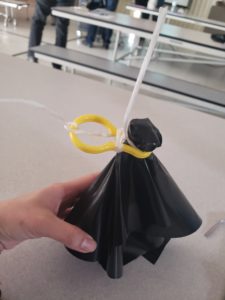
The yellow fasteners are unique to the DWR. More photos on the process of creating these button holds, and more from the day, are here.
After lunch, we had the opportunity to fill and work with sandbags. David advised us to fill the sandbags 1/3 full to make them easier to handle.
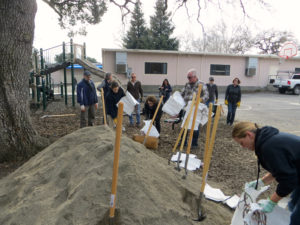
Note: If given the choice, we learned that burlap bags were preferable to plastic because burlap slips less and lasts longer. We had a big pile of sand and boxes of bags to fill and experiment with.
Nearby we had a little “boil” in the ground, so we started stacking the bags around as directed, making a 45° fold and turn with each new bag. Our bottom layer was to be 1.5 times as wide as our top layer, so if we went out two layers overlapping a bit, we could go two layers high.
Our base was ready for three layers high but we didn’t fill enough sandbags to complete this task. (The collection of bags looked abundant before we got started.)
We were encouraged to form a line to pass the bags over a distance (with mixed results) to create our final project, with the base and one side at 90° as if it were against a wall.


It was a great event.
Thanks to Richard and David from California Dept. of Water Resources for sharing your stories and for an informative day.
Thanks also to Lynn and Karra for sharing their photos, and to Lynn for setting this event up.
